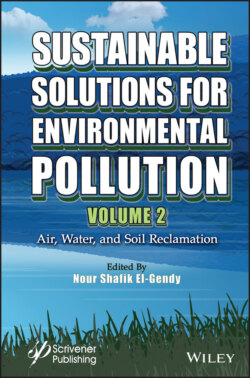Читать книгу Sustainable Solutions for Environmental Pollution, Volume 2 - Группа авторов - Страница 26
1.7.2 Aquatic Phytobiome
ОглавлениеThe phytobiome consists in the community of micro-organisms, fungi, protists, invertebrates, and other plants, in more or less mutualistic or symbiotic way, associated with plants (Leach et al., 2017). Unique physiological and anatomical adaptations in the root system of wetland plants exist, allowing them to exploit the light, water, and nutrients. The adapted wetland plant roots are surrounded by a rhizosphere, which attracts by its water, oxygen, and nutrients a myriad of wetland organisms. Phytobiome plays a major role in phyto-technology.
The wetland macrophytes rhizosphere hosts large quantities of rhizospheric bacteria and archaea involved with nutrient transformation (Vymazal, 2011). Endophytic bacteria reside in various root tissues where they play an essential role in macrophytes, supporting them by providing critical nutrients such as nitrogen and phosphorus and other essential ones such as potassium in an easy-absorbable form (Cuellar-Bermudez et al., 2017; Shahid et al., 2020b). Rhizospheric and endophytic microorganisms are both essential in macrophytes growth promotion and phytoremediation. In tandem, they contribute to the fight against mixed contamination by biodegradation and sequestration of metals through a reciprocal support between macrophytes and their associated phytobiome (Shahid et al., 2020b). Much of the wetlands N-metabolism occur at or near the rhizophere. Wetland macrophytes roots influence bacterial processes in the outer region of their rhizosphere by modifying the availability of substrates and by providing oxygen and degradable OM (Bardgett and van der Putten, 2014). Fungi associate intimately with roots in macrophyte rhizospheres and thereby influence prominently wetland functioning and phytoremediation. The fungal and wetland plant associations perform several specialized functions, such as Fe nutrition and metal detoxification (Wenzel, 2009). Protozoa are widespread: their feeding on roots and microorganisms enhances the nutrient cycling through the microbial loop as well as it facilitates the passage of nutrients and energy up the food chain (Dart, 1990). In wetland soil, invertebrates are attracted to rhizosphere for oxygen and food. The rhizosphere invertebrates consume biota, flora, and root tissue, modifying the microbial biogeochemical processes, recycling nutrients, and influencing plant growth which is making them important for phytoremediation (Du et al., 2014). Finally, viruses profoundly influence the aquatic communities and bio-geochemical cycles of wetlands. Their role in the microbial loop and as pathogens can make viruses crucial to the function of wetland vegetation (Raven, 2006).
